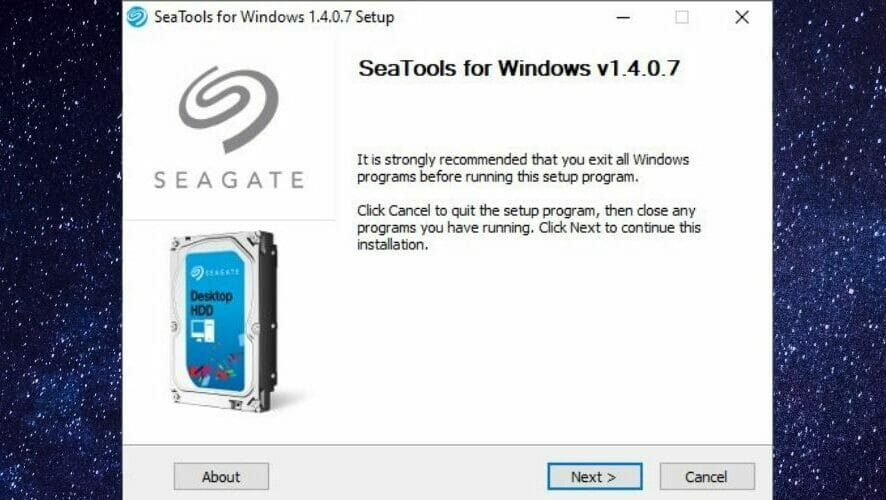

My existing Seagate 0.5 TB EHD is already about six years old.

So what do you experienced guys do with such drives these days? I don't think having the new drive replaced would help, because I fully expect the same Short Generic failure for all similar drives! I'm all confused now, - should I not worry about possible bad sectors? The problem is, long formatting is prohibitively time consuming for such large capacity HDDs. passed the Short DST, and failed the Short Generic test, - didn't run the Long Generic test), but it appears to be working fine!įunny thing is, on reporting my observations, another Seagate rep advised me to ignore the Short Generic test results, and strongly advised me to *not* run the Long Generic test, and not bother running these tests (there own tools - and this goes contrary to what their first rep had suggested earlier) as long as the HDD is recognized and seems to work fine! Subsequently I ran the same tests on another identical drive I had purchased a couple of months back (past the replacement deadline now) - same results (i.e.
Seagate seatools long generic fail windows 10#
Apparently that could cause the Short Generic Test to fail (whereas Windows 10 reportedly passes it for the same drive!). Please note that my issue (the exact Short Generic Test fail - Long Generic Test pass modes) is apparently quite common! My OS is Windows 7. I don't know what to make of the results - does my new drive have real issues that must be addressed (I can still have it replaced), or can I ignore the Short Generic Test failure since the Long Generic Test passed? The Long Generic Test passed (after 11 hours)! But the Short Generic Test still failed! It asked me to run the Long Generic Test.Ĥ.

The Short Generic Test failed! (the outer scan completed 100%, but the inner scan immediately failed at 0%). Do you guys use SeaTools for Seagate HDDs? I was advised by a Seagate rep to run the Basic tests to check out my new 4TB Backup Plus external hdd, and I got confusing results:Ģ.


 0 kommentar(er)
0 kommentar(er)
